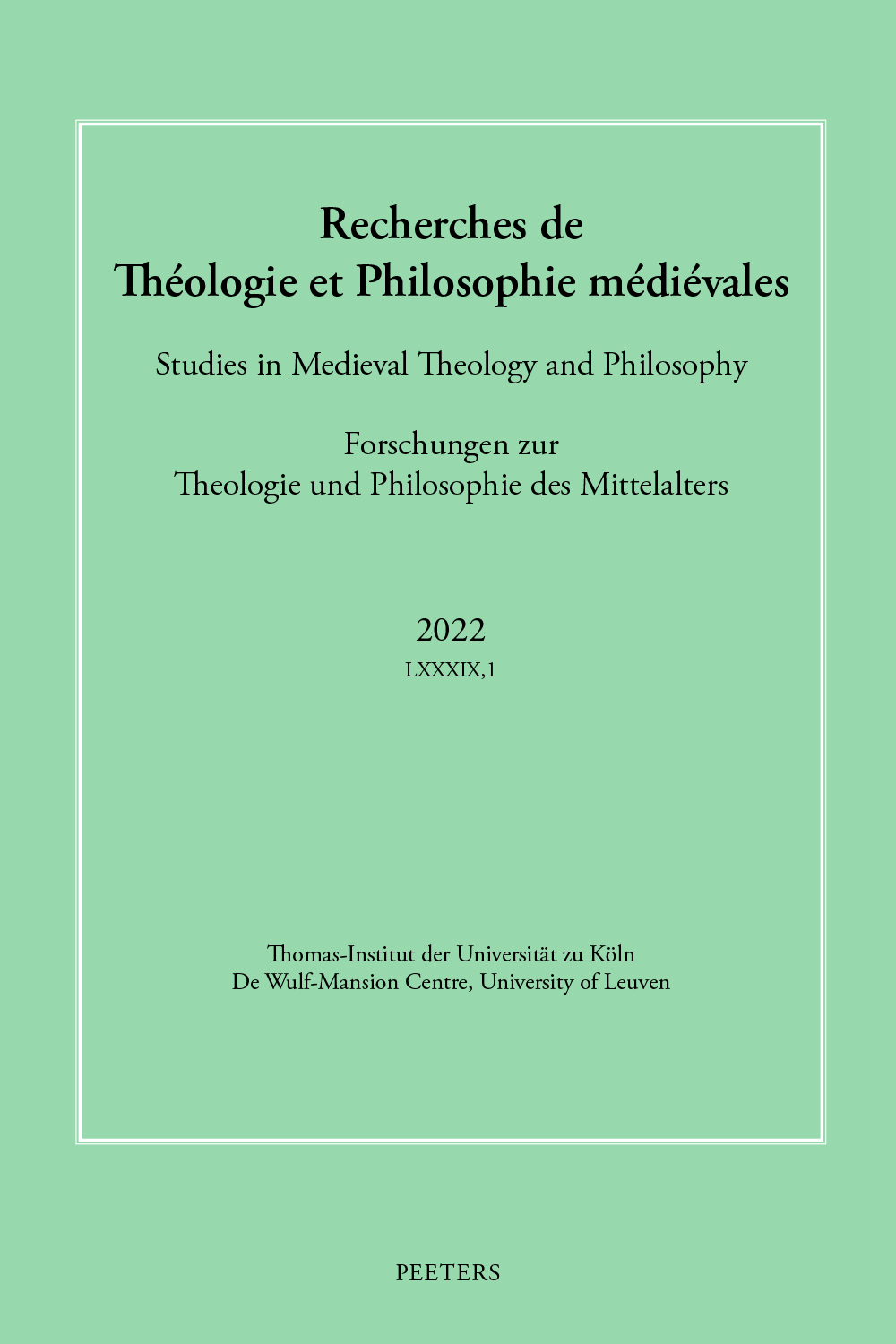 previous article in this issue previous article in this issue | next article in this issue  |

Preview first page |
Document Details : Title: Die Geometrie der Bienenwabe Subtitle: Albertus Magnus, Karl von Baer und die Debatte über das Vorstellungsvermögen und die Seele der Insekten zwischen Mittelalter und Neuzeit Author(s): ROLING, Bernd Journal: Recherches de Théologie et Philosophie Médiévales Volume: 80 Issue: 2 Date: 2013 Pages: 363-466 DOI: 10.2143/RTPM.80.2.3005401 Abstract : How to explain the architectonic skills of insects, best represented by the hexagonal structure of the honeycomb? This was one of the most striking puzzles in the history of science and epistemology. How was such a lowly animal able to construct complex structures, which obviously imitated geometrical patterns? How could the obvious gap between the product and its maker be explained? These questions ignited a debate that started with Albert the Great in the High Middle Ages and included such figures as Thomas Aquinas, Roger Bacon, the Cartesians, Johannes Kepler, as well as philosophically trained natural scientists like Georges Buffon, René-Antoine Réaumur, Charles Bonnet, and of course Charles Darwin and the outstanding naturalists of the 19th and 20th century. Taking the skills of the bee as a starting point, the present paper reconstructs this long discussion of insect architecture and insect intelligence, and tries to uncover its medieval beginnings. Although in the early modern period the amount of relevant empirical observation grew continuously, nevertheless the solutions to the riddle of the honeycomb followed patterns that remained almost unchanged since the time of Albert the Great. |
|


